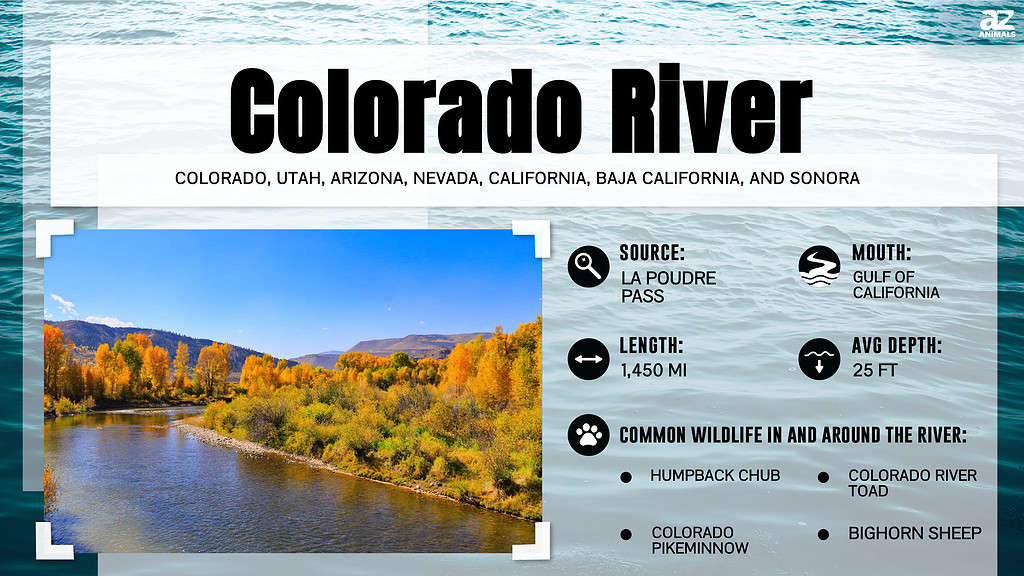
The Colorado River starts high in the Rocky Mountains and flows Southwest all the way down to Mexico. There are seven states that are part of the Colorado River Basin but the river only flows directly through five U.S. states. The River serves as a border between several states and it is also the border between the U.S. and Mexico for about 17 miles. Let’s find out about every state the Colorado River runs through.
Where does the Colorado River begin?
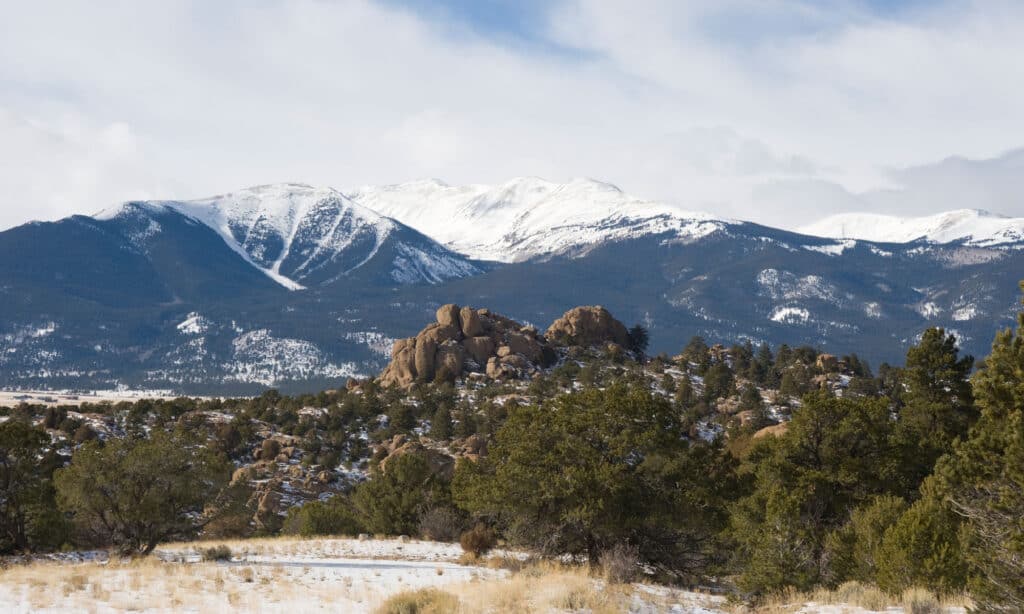
The Headwaters of the Colorado River are in the Rocky Mountain National Park at La Poudre Pass Lake.
©iStock.com/chapin31
The Colorado River begins at La Poudre Pass Lake in Rocky Mountain National Park. It is a small cool lake that is right at the Great Continental Divide. The history behind the name is that early trappers used to bury their valuables in the ground, using natural landmarks as reminders of where their items were hidden. They called the river Cache La Poudre River and the lake La Poudre Pass Lake. The French translation is similar to “hide the powder” because gunpowder was one of the valuables they would bury to hide from robbers. The small lake is not a huge tourist attraction but you can walk to it from a small parking area nearby.
Where does the Colorado River end?
The Colorado River ends right before the Gulf of California in Mexico. According to NASA images the water flows into the surrounding desert sands in Mexico before actually making it to the Gulf Waters. They estimate only 10% of the water that flows into the Colorado river even makes it all the way to Mexico.
How long is the Colorado River?

The Colorado River twists and turns for 1,450 miles.
©canadastock/Shutterstock.com
The Colorado River is 1,450 miles long.
How deep is the Colorado River?
The Colorado River is an average of 20-25 feet deep. The deepest spot is 85 feet at Mile 135 and it is the least deep is 6 feet.
How wide is the Colorado River?
The Colorado River is an average of 200-300 feet wide. The widest part of the river is in Lake Powell where the lake is 25 miles wide. The narrowest point is the same as the deepest at Mile 135 it is only 76 feet wide.
What is every state the Colorado River runs through?
The Colorado River runs through Colorado, Utah, Arizona, Nevada and California. It then travels over into Mexico where it crosses between the two Mexican states of Baja California and Sonora.
Colorado

The Gunnison River flows through the Black Canyon of the Gunnison National Park and into the Colorado River.
©SL-Photography/Shutterstock.com
The Colorado River starts in Rocky Mountain National Park as a cool stream leading out of La Poudre Pass Lake. Rocky Mountain National Park is just NW of Denver. The River Flows south down to Grand Lake, Shadow Mountain Lake and Lake Grandby. Lake Grandby is the fourth largest lake in Colorado. Over the years many dams have been built along the Colorado River to harness the amazing power and to store fresh water. It passes through the Shadow Mountain and Grandby dam on its way down to Grand Junction. Here it flows NE for a bit before crossing into Utah. The Gunnison River joins the Colorado in Grand Junction.
Utah
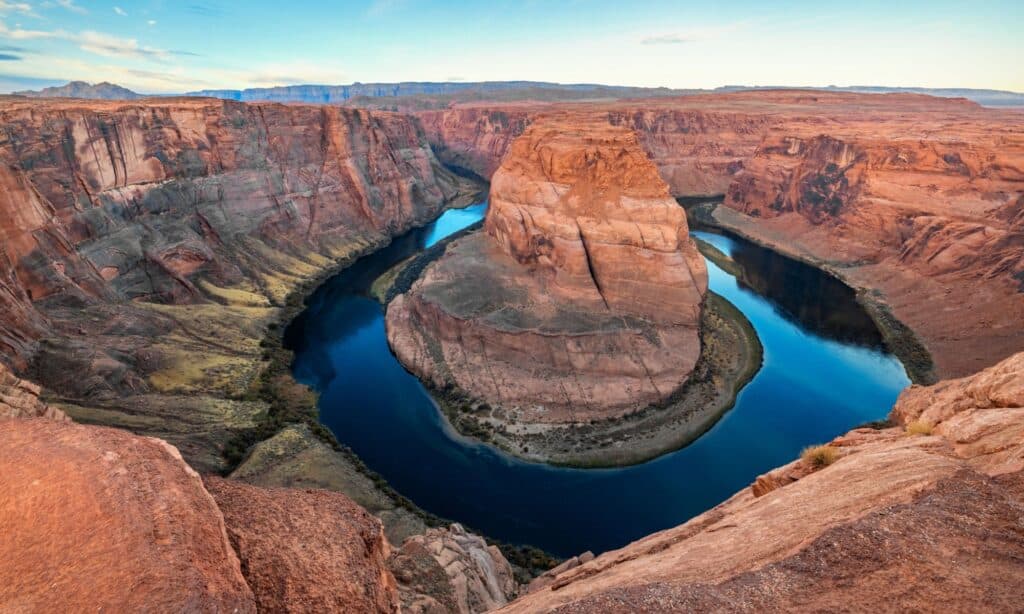
The famous Horseshoe Bend in Glen Canyon National Recreation Area in Utah.
©Lebid Volodymyr/Shutterstock.com
The Colorado River enters Utah about 27 miles west of Grand Junction, CO. It then flows parallel to Hwy 70 on its way down to Arches National Park. There are around 1.5 million visitors that go to Arches National Park each year. Another 30 miles or so downstream the River runs through another popular park, Canyonlands National Park. Here is where the Green River, Which flows down from Wyoming, flows into the Colorado. It continues its SW journey down to the Glen Canyon where it forms the famous Horseshoe Bend. Visitors can view the bend from several locations in Glen Canyon National Recreation Area. It passes through the Glen Canyon Dam and then pools right before crossing the border into Arizona in Lake Powell.
Arizona
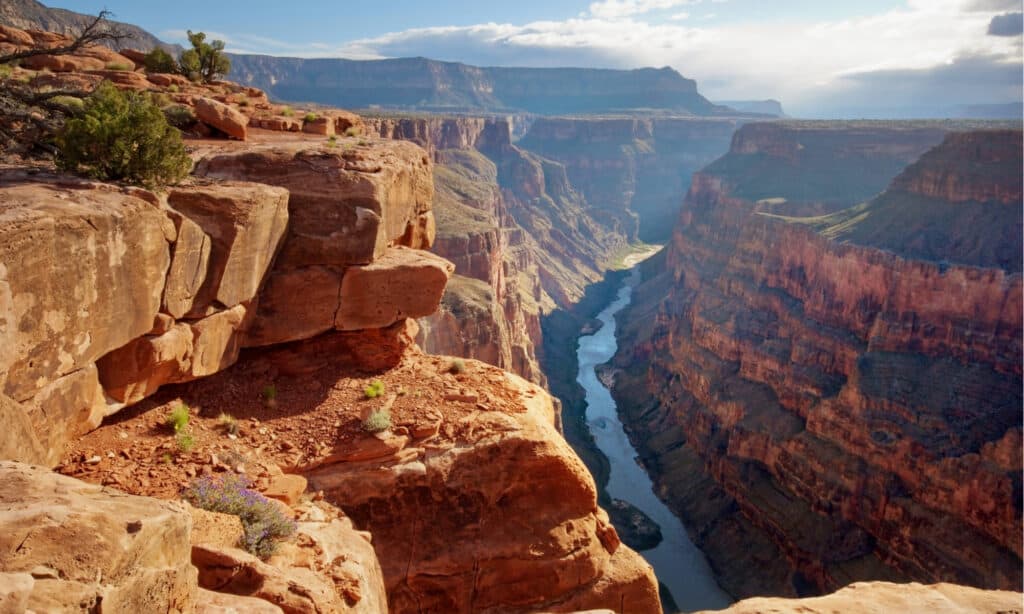
The Colorado River flows through the Grand Canyon in Arizona. The Grand Canyon is 277 miles long and ends right before the Hoover Dam.
©sumikophoto/Shutterstock.com
The Colorado makes it most famous trek through the Grand Canyon in Arizona. The Grand Canyon begins at Lees Ferry (Mile 0) and ends at Grand Wash Cliffs (Mile 277). Did you know you can raft all the way down the Grand Canyon on the Colorado. You have obtain a permit and have an experienced guide. It can take 7-18 days to make the 277 mile trek. The Colorado keeps going west through Arizona to the Nevada border where it pools in the enormous Lake Mead created by the Hoover Dam. Lake Mead is 112 miles long when it is full and 247 square miles of surface area. Lake Mead and Lake Powell are at critically low levels due to recent droughts. At Lake Mead the Colorado heads south where it continues south until Mexico.
Nevada
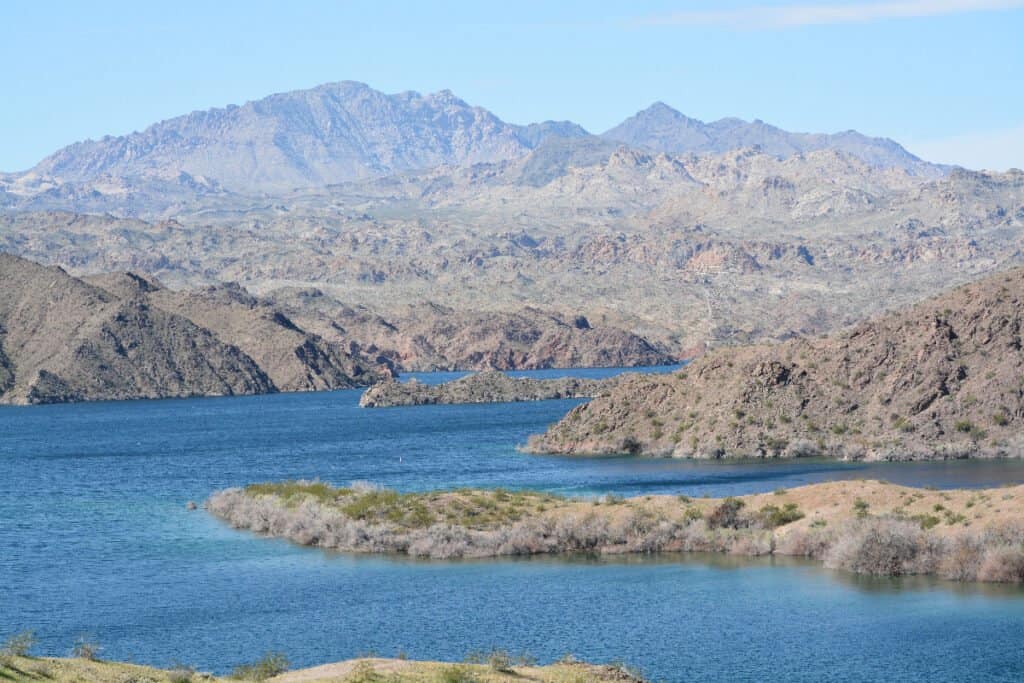
The Colorado River pools at Lake Mohave from the Davis Dam. There is excellent fishing in the lake for bass, trout and catfish.
©Norm Lane/Shutterstock.com
The Colorado River serves as the border between Arizona and Nevada down to where it meets up with the California border. It flows down to Lake Mohave where the Davis Dam works with the flow of water from the Hoover Dam to maintain a consistent waterway system. There is excellent fishing in Lake Mohave including largemouth bass, rainbow trout and channel catfish. Nevada comes to a point just south of Riviera, AZ at which point the Colorado River becomes the border between California and Arizona.
California

Bordering between California and Arizona is Lake Havasu, right along the Colorado River.
©Pamela Au/Shutterstock.com
The Colorado River serves as the border with Arizona all along the SE edge of California. It travels down to the Beautiful Lake Havasu, a popular recreation area. Residents and visitors on both sides of Lake Havasu enjoy its cool blue waters. Further down the border the River leaves California and begins the border with the country of Mexico. Just past Yuma Arizona it is the border with Mexico for 17 miles.
What Mexican states does the Colorado River run through?
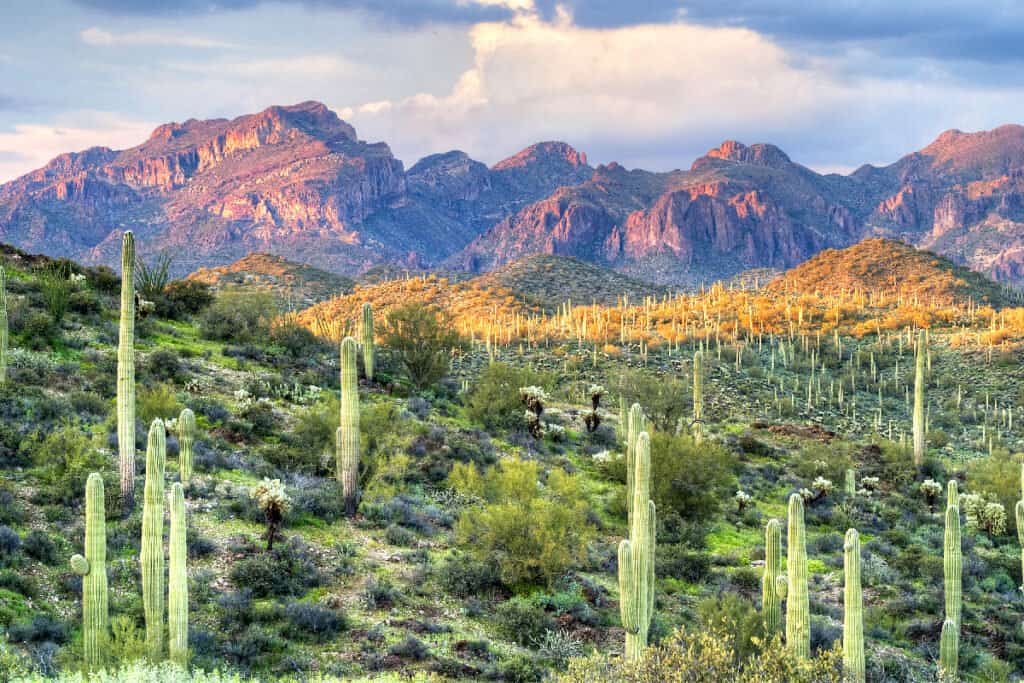
The Colorado River ends in the Sonoran desert between the Mexican states of Baja California and Sonora.
©LHBLLC/Shutterstock.com
- Baja California: The Mexican state of Baja California is west of the Colorado River and it borders California all the way out to the Pacific. It is a long peninsula along the coast that goes all the way down to Baja California Sur. To the east is the large Gulf of California. Right before entering the Gulf, the Colorado River disappears into the sands of the surrounding Sonoran Desert which is in both Baja California and Sonora.
- Sonora: The Mexican state of Sonora is east of the Colorado River and it borders Arizona to the north. The Gulf of California lies along the western coast of the state. The NW border of the state is the Colorado River and the River ends in the Sonoran Desert right before the Gulf of California.
Although there is not much fanfare around the end of the Colorado River, or the beginning for that matter, there are many breathtaking sites, canyons and parks through all of the states it runs through.
The photo featured at the top of this post is © Beth Ruggiero-York/Shutterstock.com
Thank you for reading! Have some feedback for us? Contact the AZ Animals editorial team.






